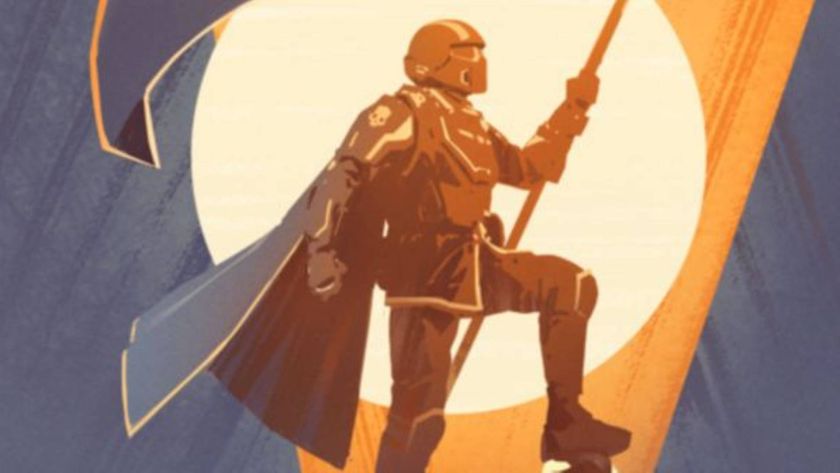Why you can trust 12DOVE
War is a bad thing. Painful. Upsetting. Not very good. Clint Eastwood has noticed this. And in Flags Of Our Fathers, he makes the point very ably in the first 10 minutes. Then again. And again. For the next 122.
The first in his ain’t-war-a-bitch double header – to be followed by 2007’s Japanese perspective-shifter Letters From Iwo Jima – Flags has been celebrated like the Second Coming in the US press. Much ballyhoo that, at 76, Eastwood has mounted his biggest-ever production and, as The New York Times would have it, is “saying something new and vital about the war”. Really? Flags is clearly honourable in intent, but while the film is handsomely crafted and dutifully observed, it is also politely suffocating.
This is a revisionist reworking of Sands Of Iwo Jima (1949), in which John Wayne’s martinet Sergeant Stryker transforms green recruits into killing machines, storming the island and hoisting the pole in Joe Rosenthal’s Pulitzer Prize-winning photograph, ‘Raising The Flag On Iwo Jima’. The picture was worth more than just a thousand words, with $14 billion in saving bonds riding on its propaganda value. The shot sold World War Two to America. The film sold the glory of the marines to the next generation, driving recruitment for the conflicts in Korea and Vietnam. (As Born On The Fourth Of July’s paraplegic veteran Ron Kovic once said, “I gave my dead dick for John Wayne.”) It was, then, a good movie: rousing, action-packed, compelling. But while there is obvious merit, in this age, to exploring government manipulation and the murky nature of heroism, Flags is a lesser film, its thematic points made with greater impact and emotion in everything from Paths Of Glory to The Big Red One.
Saving Private Ryan’s modern-day bookends were damned by some as sentimental, but its extended flashback allowed for some connection with the soldiers. Here, the series of flashbacks – from pre-battle to flag-waving to publicity tour to the ’90s investigation of James Bradley (Tom McCarthy) into his father’s experiences – is initially effective, but eventually robs the story of any tension (you know who buys it), while the edits become grating (Hey, fireworks! FLASHBACK TO THE BATTLEFIELD. Hey, lightning! FLASHBACK TO THE BATTLEFIELD. Hey, THAT’S ENOUGH). The effect is numbing, while the battle to take Mount Suribachi lacks the visceral oomph of Ryan or the grubby poetry of The Thin Red Line. Shot in austere tones by Mystic River DoP Tom Stern, it’s a grey panorama of CGI and bloodied prosthetic corpse cast-offs from Madame Tussauds.
Trying to provide an emotional through-line, the leads hit and hold their one notes: Bradford the all-American opportunist, Phillippe the Middle-American stoic, Beach the Native American victim (whose story is told just as well in the Johnny Cash hit ‘The Ballad Of Ira Hayes’). Standing out in the ensemble are Barry Pepper as the Stryker-with-a-heart sarge, Jamie Bell as an optimistic grunt and John Slattery, as an ends-justifies-the-means PR (“People will shit money!”). His scenes are the most effective, showing how compromise can lead to despair; how telling the truth is not always easy or – as Bradley finds when faced with a mother who believes her son was in the picture – immediately desirable. Yet by the time Flags goes into voice-overdrive in the final act, with Bradley Jr delivering a teary-eyed eulogy for his dearly departed dad, it still can’t resist a little glossing of the heroism it so laboriously tries to deconstruct: “They may have fought for their country, but they died for their friends.” No: they died because they were torn apart by burning shards of metal.
There’s no doubting this is a well-meant, even admirable, picture, which will find appreciative audiences despite its distant and repetitive nature – and will march through awards season weighed down with nominations. But sadly, the prospect of Eastwood’s Kill Hill: Vol 2 (from the Japanese POV) is now rather daunting. Different race, same point: war is a bad thing. Painful. Upsetting. Not very good.
On target for awards, but Eastwood's epic is repetitive and occasionally trite. Not The Longest Day. But sometimes it feels like it.
The Total Film team are made up of the finest minds in all of film journalism. They are: Editor Jane Crowther, Deputy Editor Matt Maytum, Reviews Ed Matthew Leyland, News Editor Jordan Farley, and Online Editor Emily Murray. Expect exclusive news, reviews, features, and more from the team behind the smarter movie magazine.

Ex Nintendo PR managers say the Switch 2 generation is likely to see the retirement of "several of the major developers at Nintendo who we have known for 40 something years"

Helldivers 2 CEO says industry layoffs have seen "very little accountability" from executives who "let go of one third of the company because you made stupid decisions"

Spider-Man: Brand New Day - How Peter Parker and Mary Jane's break up led to one of the wall-crawler's most transformative comic eras










